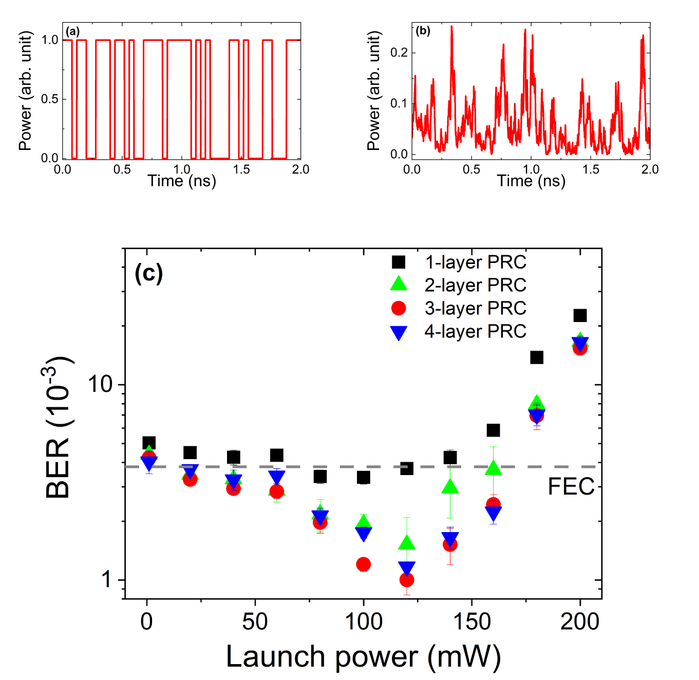The development of artificial intelligence relies, primarily, on deep neural networks, and the large-scale neural network language models like ChatGPT have posed great challenges to the electronic computing chips based on the von Neumann architecture. As a promising solution, optical computing can boost energy efficiency and reduce computation latency. In recent years, a large variety of optical computing architectures have been proposed. Differing from these feedforward neural networks used for imaging recognition, recurrent neural networks (RNNs) have an inherent memory effect and are favorable for solving time-dependent tasks such as natural language processing and temporal signal processing. Reservoir computing is such a kind of RNN, but with fixed weights both in the input layer and in the hidden reservoir layers. Only weights in the readout layer require training, which leads to the simple training algorithm and the fast training speed. Although various hardware reservoir computers have been widely investigated, most hardware reservoir computers have only one hidden reservoir layer, which substantially limits their capacity to deal with complex real-world tasks. Therefore, the development of deep reservoir computers with multiple hidden reservoir layers is strongly desired.

Figure 1. Architecture of the deep photonic reservoir computer
Recently, Associate Professor Wang Cheng’s team in SIST, for the first time, proposed a fully-optical deep reservoir computing architecture constructed by cascading injection-locked semiconductor lasers. This architecture has four hidden layers, each of which consists of a semiconductor laser and an optical feedback loop (Figure 1). The interconnection between each layer is achieved through the optical injection locking technique. This interconnection is all optical, and requires no optical-to-electrical conversion or analog-to-digital conversion, having the advantages of low power consumption and low computation latency. In addition, at each hidden layer, a laser is set to provide power supply, so that the optical deep reservoir computing architecture is highly scalable. The researchers successfully applied the optical deep reservoir computer in solving a complex real-world problem of nonlinear signal equalization in optical fiber communication. The results demonstrated that the deep reservoir computer has strong compensation capability for the nonlinear impairment of optic fibers, substantially increasing the transmission capability of fiber channels ( Figure 2).
The research was published in an article entitled “Deep photonic reservoir computing recurrent network” in the journal Optica in December. ShanghaiTech is the primary affiliation. Second-year master student Shen Yiwei is the first author, and Prof. Wang Cheng is the corresponding author.

Figure 2. Application of the deep reservoir computer in nonlinear signal equalizer
*This article is provided by Prof. Wang Cheng




 沪公网安备 31011502006855号
沪公网安备 31011502006855号
